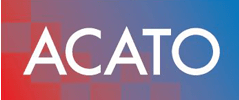A Practical Approach to Document Control in ISO 27001

A Step-by-Step Guide to Document Control in ISO 27001
Document control is a critical aspect of ISO 27001, yet many organizations struggle to implement effective strategies. This guide will walk through essential steps, including establishing a document control policy and implementing procedures. Readers will learn how to train staff for compliance and leverage technology for streamlined processes. Addressing common challenges in document control, this content will provide practical solutions to enhance information security and meet ISO 27001 requirements, ultimately supporting organizational growth and client trust.
Essential Key Takeaways for Effective Document Control in ISO 27001
- Document control is essential for safeguarding sensitive information in compliance with ISO 27001
- Clear roles and responsibilities enhance accountability in document management processes
- Regular audits of document control processes are crucial for maintaining compliance with ISO 27001
- Utilizing automation improves efficiency and accuracy in document management practices
- Training staff promotes awareness of document control and compliance standards
Understanding Document Control in ISO 27001

Document control in ISO 27001 encompasses the processes that manage and protect important documents, ensuring ownership, compliance, and security. Key elements include effective key management, backup strategies, and meticulous handling of employment contracts. Compliance requirements demand a structured approach to document management that supports organizations, especially in the context of remote work, safeguarding their critical information assets.
Defining Document Control and Its Importance
Document control in ISO 27001 is a critical aspect that ensures the integrity and protection of sensitive information. By implementing effective strategies, organizations can conduct thorough risk assessments and utilize data masking techniques to safeguard against potential threats. Such controls not only enhance compliance with regulations but also enable businesses to operate securely, whether in a traditional office environment or remotely, leveraging solutions like cryptography for robust data protection.
Key Elements of Document Control in ISO 27001
The key elements of document control in ISO 27001 include robust access control measures, standardization of documentation, and effective IT service management practices. Organizations must establish clear roles and responsibilities for documentownership, ensuring that sensitive information is accessible only to authorized personnel. Additionally, standardization helps in maintaining consistency across documents while implementing proactive strategies to mitigate risks such as malware threats, fostering a
that understands the importance of compliance and security measures.
| Key Element | Description |
|---|---|
| Access Control | Restricting document access to authorized personnel to protect sensitive information. |
| Standardization | Maintaining consistency across documents to simplify management and compliance. |
| IT Service Management | Integrating document control with IT services to ensure secure information handling. |
| Knowledge Sharing | Fostering an understanding of document control processes among employees. |
| Malware Defense | Implementing strategies to protect documents from malware threats. |
Compliance Requirements for Document Management
The compliance requirements for document management within the iso 27001 certificationprocess focus on establishing a well-defined inventory of all information assets. This involves implementing the Plan-Do-Check-Act (PDCA) cycle to ensure continuous improvement in communications security. By aligning with standards set by the International Electrotechnical Commission, organizations can create robust frameworks that protect sensitive documents while meeting regulatory expectations.
Now that the importance of document control is clear, it’s time to craft a policy that suits your needs. A strong document control policy lays the foundation for effective management and protection of your information assets.
Establishing a Document Control Policy

Outlining the purpose and scope of a document control policy is essential for effective information security management. This involves defining roles and responsibilities to ensure accountability in document handling, as well as setting procedures for document creation and review. Attention to physical security and the complexities of information and communications technology further enhances the robustness of these processes.
By systematically addressing these components, organizations can create a structured approach to document control that not only safeguards sensitive information but also aligns with industry standards.
Outlining the Purpose and Scope of the Policy
Outlining the purpose and scope of a document control policy is essential for enhancing security awareness within an organization. A well-defined policy establishes clear objectives, such as safeguarding intellectual property and ensuring compliance with compliance. By engaging a consultant to guide the development of this policy, businesses can foster confidence among employees regarding document handling and management procedures.
- Define the objectives of the policy.
- Identify the scope of documents covered.
- Establish roles and responsibilities for document management.
- Incorporate compliance standards to ensure security.
- Promote security awareness throughout the organization.
Defining Roles and Responsibilities in Document Control
Defining roles and responsibilities in document control is vital for ensuring compliance with ISO 27001 standards. Each team member should understand their specific duties pertaining to document management, which includes maintaining confidentiality and facilitating effective communication throughout the supply chain. For instance, designating a document controller to oversee the processes can help streamline organization and enhance security measures, such as penetration testing, ensuring that sensitive information is protected from unauthorized access.
| Role | Responsibilities |
|---|---|
| Document Controller | Oversees document management processes and ensures compliance with ISO 27001 standards. |
| IT Security Officer | Implement security measures, including penetration testing, to protect documents. |
| Compliance Officer | Ensures adherence to international standards and communicates necessary updates. |
| Team Members | Maintain confidentiality and follow document handling procedures within the supply chain. |
Setting Procedures for Document Creation and Review
Establishing clear procedures for document creation and review is essential for compliance with standards. Organizations should develop a checklist that outlines the necessary steps in the documentation process, ensuring that all requirements are met and potential failures in the ICT supply chain are minimized. Incorporating a robust risk management framework into these procedures can significantly enhance overall data security and compliance with relevant regulations.
- Define specific steps for document creation.
- Develop a comprehensive checklist for review processes.
- Integrate risk management principles into procedures.
- Ensure compliance with industry regulations.
- Identify potential failures in the ICT supply chain.
Implementing Document Control Procedures

Document control procedures involve critical steps for document identification and approval, which are essential for managing information security effectively. Version control practices ensure accuracy and consistency across all documentation, while maintaining an accessible document repository facilitates efficient information security management. Together, these elements contribute to robust vulnerability management and strengthen an organization’s competitive advantage, particularly in environments with mobile device usage. Learn more about information security guidelines.
Steps for Document Identification and Approval
Establishing steps for document identification and approval is pivotal for maintaining data security and enhancing operational efficiency within the framework of ISO 27001. Organizations should implement a thorough review process that includes root cause analysis to pinpoint any issues emerging from documentation practices, particularly those that may expose personal data. This structured approach not only minimizes risks but also prevents potential disruptions, akin to a flood, that can arise from inadequate document management and oversight.
Version Control Practices to Ensure Accuracy
Version control is essential for maintaining accuracy in document control procedures within ISO 27001. By establishing a systematic approach to change management, organizations can track amendments efficiently, ensuring that all users work with the most current information. Involving an expertvendor in this process can enhance the implementation of a robust password policy, creating an additional layer of security against vulnerabilities that may arise during document handling.
- Define the importance of version control in document accuracy.
- Implement change management strategies to track document modifications.
- Consult with experts to choose reliable vendor solutions.
- Establish strong password policies to protect sensitive documents.
- Identify and address vulnerabilities in document management practices.
Maintaining an Accessible Document Repository
Maintaining an accessible document repository is crucial for compliant document control under ISO 27001. Organizations should prioritize strong encryption methods to secure sensitive files, while ensuring that senior management supports a culture of accountability surrounding document accessibility. Regular risk assessments can identify vulnerabilities within the repository, allowing for proactive measures to enhance security and streamline document retrieval processes.
- Establish a structured document repository.
- Implement strong encryption for document security.
- Engage senior management to foster a culture of accountability.
- Conduct regular risk assessments for continuous improvement.
- Ensure efficient document retrieval processes.
Document control procedures lay the foundation for clarity and order. To keep that foundation strong, training and awareness are essential for all involved.
Training and Awareness for Effective Document Control

Conducting training sessions for staff is essential to ensuring a robust document control system within. These sessions promote awareness about document control processes and the significance of infrastructureintegrity. Implementing best practices for ongoing education helps identify gaps in knowledge, empowering leadership to fortify the organization‘s asset management strategies and enhance overall.
Conducting Training Sessions for Staff
Conducting training sessions for staff is a vital component of effective document control in ISO 27001 certification. These sessions should focus on the importance of configuration management and safeguarding proprietary information, ensuring that employees comprehend their roles in maintaining documentintegrity. Additionally, incorporating practices related to can help staff recognize the impact of their document handling on overall compliance and security:
- Establish clear goals for training sessions.
- Communicate the significance of document control processes.
- Provide practical examples relevant to specific roles.
- Integrate audits into the training to emphasize accountability.
- Encourage questions and discussions to enhance understanding.
Creating Awareness About Document Control Processes
Creating awareness about document control processes is essential for successful implementation of an ISMS. Organizations should focus on developing a culture where employees understand the importance of adherence to policies, such as the acceptable use policy, to enhance resource allocation for document management. By integrating guidance from the National Institute of Standards and Technology into training sessions, teams can better grasp the significance of network security and the role of document control in safeguarding sensitive information.
Best Practices for Ongoing Education
Best practices for ongoing education in document control under ISO 27001 focus on integrating training with governance frameworks, emphasizing the importance of compliance with the General Data Protection Regulation (GDPR) and relevant laws. Organizations should implement project management techniques to structure training initiatives, ensuring they address key areas such as audit readiness and documentation best practices. Regularly scheduled training sessions, alongside updates on legal obligations, empower employees to understand their roles in maintaining secure, compliant document management processes that align with industry standards. data protection training
Training creates a strong foundation, but it’s in the constant watch that true strength lies. Keeping a close eye on documents ensures they serve their purpose, guiding the team forward with clarity. Learn more about data protection training.
Monitoring and Maintaining Document Control

Regular audits of document control processes are essential for maintaining compliance with ISO standards, helping organizations protect their reputation against threats like data breaches and ransomware. Updating documents according to ISO 27001 changes ensures that stakeholders follow the proper workflow, while effectively managing nonconformities and incorrect document use safeguards integrity. Each aspect plays a critical role in reinforcing a solid framework for document management.
Regular Audits of Document Control Processes
Regular audits of document control processes in ISO 27001 are crucial for effective asset management and ongoing understanding of organizational compliance. These audits provide measurable insights into areas such as human resourcestraining, ensuring staff are equipped to manage sensitive information accurately. By continuously assessing the document control landscape, organizations can identify gaps or nonconformities, enabling them to refine their strategies and enhance compliance with industry standards.
Updating Documents as Per ISO 27001 Changes
Updating documents according to ISO 27001 changes is integral to maintaining an effective document management system. Organizations should establish a systematic methodology to evaluate existing documents regularly, ensuring they remain aligned with updated compliance requirements and business practices. By identifying the scope of changes needed and applying a structured approach to document revisions, businesses can foster continuous improvement and associated with outdated information.
| Step | Description |
|---|---|
| Evaluate Existing Documents | Review current documents for compliance with updated ISO 27001 standards. |
| Identify Changes Required | Determine the scope of necessary updates based on recent changes in regulations or internal policies. |
| Implement Revisions | Utilize a structured methodology to revise documents and ensure consistent application of changes. |
| Conduct Final Review | Perform a thorough evaluation of revised documents to confirm compliance and accuracy. |
Managing Nonconformities and Incorrect Document Use
Managing nonconformities and incorrect document use is essential to maintaining compliance with ISO 27001 standards. Organizations should invest in regular training sessions to ensure that employees are equipped to identify and rectify any discrepancies related to document management, particularly concerning contracts and compliance procedures. By implementing a systematic risk management approach and conducting interviews with staff regarding their experiences, a company can uncover potential weaknesses in document handling and develop effective strategies to address these issues promptly. Managing document control requires diligence and focus. Yet, the right is essential. It can make the task easier and more efficient, opening new doors to improvement.
Leveraging Technology for Document Control

Choosing the right Document Management System (DMS) is essential for effective document control. This involves integrating document control practices with ISO 27001 compliance to ensure adherence across all levels. Additionally, utilizing automation improves efficiency and accuracy, particularly in data centers managing sensitive information and employment records. Each of these elements plays a crucial role in streamlining processes and enhancing security measures.
Choosing Document Management Systems
Choosing the right Document Management System (DMS) is fundamental to achieving effective document control in. Organizations should prioritize systems that incorporate strong classification tools to ensure sensitive information is organized properly, facilitating regulatory compliance and riskmitigation. An effective DMS should also include identity management features, allowing businesses to manage user access and maintain control over who can view or edit critical documents, thus enhancing overall security.
Integrating Document Control With ISO 27001 Compliance
Integrating document control with ISO standard compliance is essential for organizations aiming to enhance their information security management policies. By employing a well-defined strategy that aligns incident management practices with a continual improvement process, businesses can effectively strengthen their overall security posture. Implementing best practices, such as regular audits and updates of documentation, ensures that compliance goals are met while contributing to a culture of accountability and resilience within the organization:
| Integration Element | Description |
|---|---|
| Incident Management | Systematic handling of security incidents to minimize impact and improve responses. |
| Continual Improvement Process | Ongoing evaluation and enhancement of document control measures to maintain compliance. |
| Best Practice | Adoption of industry standards and proven methods for effective document management. |
| Strategy | Development of comprehensive approaches that align document control with ISO 27001. |
| Management Policy | Clear guidelines that govern the handling and protection of sensitive documents. |
Utilizing Automation for Efficiency and Accuracy
Utilizing automation in document control significantly enhances efficiency and accuracy within the framework of ISO 27001. Automated systems can streamline the documentation process, allowing organizations to maintain consistent records that align with requirements, such as those outlined in the NIST Cybersecurity Framework. This capability not only aids in preparing for external auditorsurveillance but also supports chief information security officers in consolidating evidence concerning compliance and security measures.
- Implement automation for routine document updates.
- Integrate automated systems with existing compliance frameworks.
- Facilitate efficient evidence gathering for audits.
- Enhance security oversight with regular automated reports.
Conclusion
Document control within the framework of ISO 27001 is vital for protecting sensitive information and ensuring compliance with industry standards. Implementing structured policies, clearly defining roles, and utilizing effective technologies fosters an environment of security and accountability. Regular audits and continuous training enhance organizational understanding and responsiveness to document management challenges. By prioritizing these practices, businesses reinforce their commitment to securing critical assets and navigating today’s complex regulatory landscape effectively.
